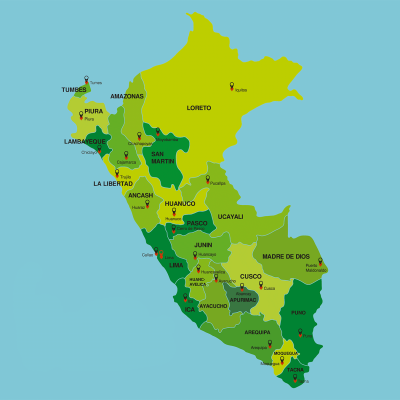Peru is strategically located on the western central coast of South America, making Lima an important center within the region.
Peru, with a population of 34 million inhabitants, is the fifth largest country in Latin America and the third largest in South America.
The Peruvian economy is among the best in Latin America with a high annual GDP that shows a solid and continuous overall performance and great stability.


Strong domestic demand will continue to be driven by private investment, steady growth in domestic consumption and rising government spending.
The presence of modern shopping centers with state-of-the-art hypermarkets and international department stores makes the country a more attractive destination for the retail industry.
Thanks to the ever-increasing domestic demand growth, the banking sector benefits and contributes to the growth in the retail banking space.
It's interesting to observe how the population growth rate in Peru has decreased over the years, primarily due to a reduction in the average number of children per woman. Despite this decline in the growth rate, the country has experienced a steady increase in its population due to a higher number of women in reproductive age. The change from a 1.7% population growth rate between 2015 and 2020 indicates a trend towards a more stable population in terms of demographic growth compared to the 2.6% recorded in the 1950-1955 period.
Furthermore, it's impressive to see how the Peruvian population has experienced significant growth since 1836 when there were approximately 1,873,700 people, reaching 34 million inhabitants in 2023. This reflects a notable shift in the country's demographics over the years.
The INEI reported that life expectancy at birth is higher in women than in men. Thus, in the 2020-2025 five-year period, women will have an average life span of 79.8 years and men 74.5 years, that is, 5.3 years less. For the year 2021, women correspond to 50.4% and men 49.6%, with a masculinity index of 98.5.


The population distribution by area of residence indicates an evolution that could be explained by internal migration, from the countryside to the city. In the 1940 Census, 64.6% of the country was represented by a rural population and only 35.4% was urban; This figure was radically inverted, reaching 17.6% in rural areas in the last 2017 Census, while urban areas rose to 82.4%. In 2023 the population projections show similar proportions.